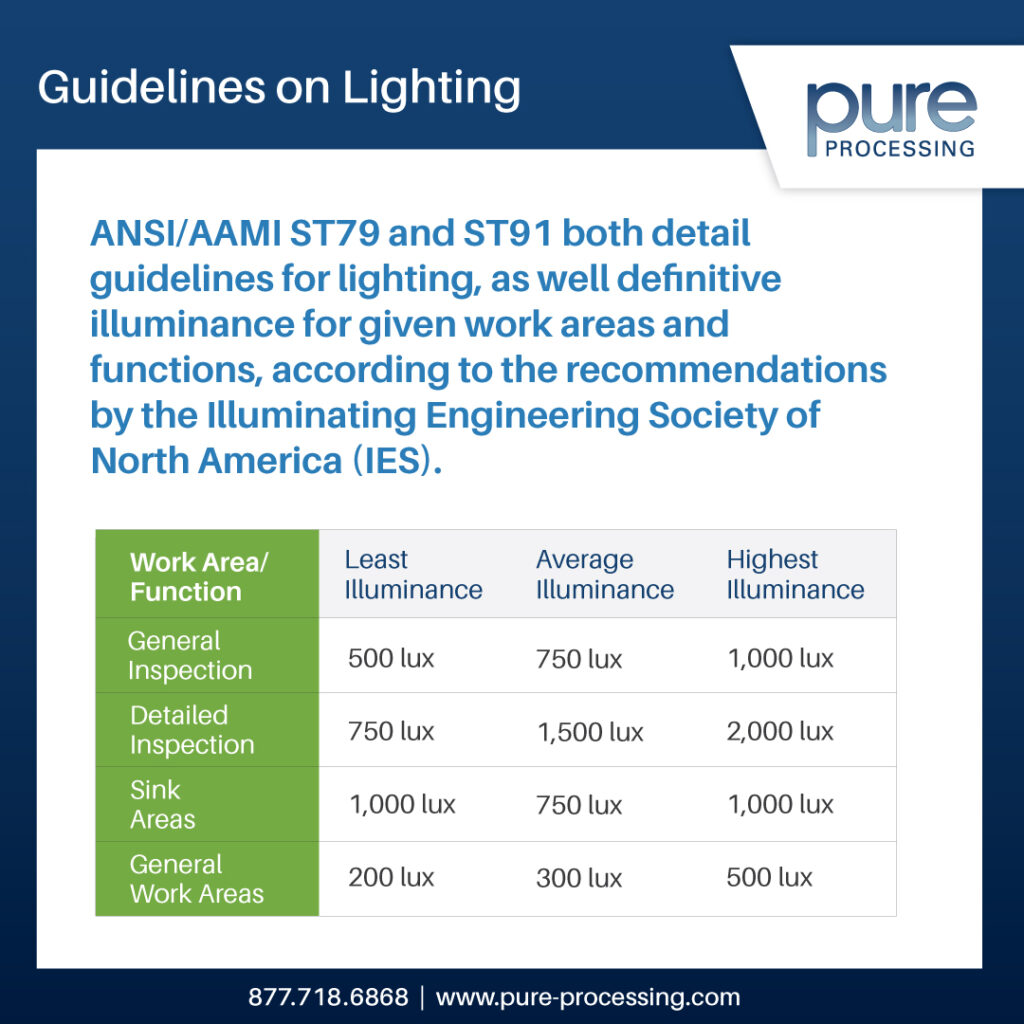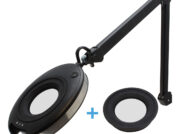
The Various Types of Ergonomics to Consider in Reprocessing Departments
In a recent Reprocessing Report post, we discussed opportune times to consider ergonomic improvements and updates. Now, we’ll discuss various types of ergonomic features to consider.
Ergonomics is defined as the science of fitting the job to the worker with a goal to increase safety and efficiency.
Many times, when we talk about ergonomics, our mind immediately goes to height-adjustability or working range of motion (all tasks are performed between shoulder and hip level). However, ergonomics and its application goes much deeper than that; it doesn’t always equate to costly projects.
Here are a few examples of ergonomics that aren’t always top of mind, but play a role in worker safety, comfort, and efficiency.
Lighting
Both ANSI/AAMI ST79 & ST91 provide luminosity recommendations specific to both job function and age of employees. Poor lighting can lead to both eye fatigue and strain. Lighting is a twofold safety measure for both the patients we serve and the teams conducting the work.
Magnification
Magnification is used to inspect small areas and details not easily seen by the naked eye. Magnification lens help alleviate eye strain, and can be purchased with lights attached to improve inspection capabilities. ANSI/AAMI ST91: 2021 recommends a minimum 5X magnification for flexible endoscope inspection with 10X magnification for duodenoscopes. Just like lighting, magnification safety measures are twofold for both the patient and the worker.
Micro-ergonomics
These can be the finer details of ergonomics that aren’t always given the spotlight, but provide comfort in huge ways. Things like anti-fatigue mats, monitor tilts for computer screens, footrests, or chemistry dispensers all provide ergonomic relief to our sterile processing and endoscope reprocessing departments.
Aesthetics & Visual Cues
When talking about aesthetics in ergonomics, it isn’t just about décor or color schemes, but rather organization and functionality. Ergonomics is rooted in efficiency and safety. How workers interact with their workspace can directly impact their ergonomic experience and the efficiency of the department. Having a clear, concise, easily understood layout will not only prevent injury due to clutter or poor configurations but will also give the worker visual cues as to the task to be performed, how to complete it and the resources available to do the job wholly and compliantly.
Posters, signage, and images can all provide quick reminders that can assist in efficiency. Having visual cues available for quick reference reduces foot traffic and body mechanics, such as extra bending and twisting to access policy binders or hard copy resources typically outside of their workstations. Strategically placed visual cues provide immediate information regarding policies and procedures.
Tracking Systems
Tracking systems contribute to ergonomics in a unique way by supporting productivity and contributing to efficiency through data collection and reporting. Additionally, tracking systems allow us to include relevant information to our teams based on the job they are completing, which aids in compliance and productivity. Integrating tracking systems at workstations enables technicians to obtain information regarding instrumentation, trays, process requirements, and IFUs without having to leave their workstations. Positioning these technologies at workstations also allows technicians to access this data in a comfortable position at working height, as opposed to hunching over a desk or table.
Conclusion
Ergonomics plays a role in all aspects of a technician’s job. How they interact with the job to their ability to comply with current standards and regulations can all be influenced by the ergonomic technology available to them. As a continuous improvement plan, ergonomics allows your department to grow with the industry and can encourage positive outcomes for both the department and the patients they serve.
References:




